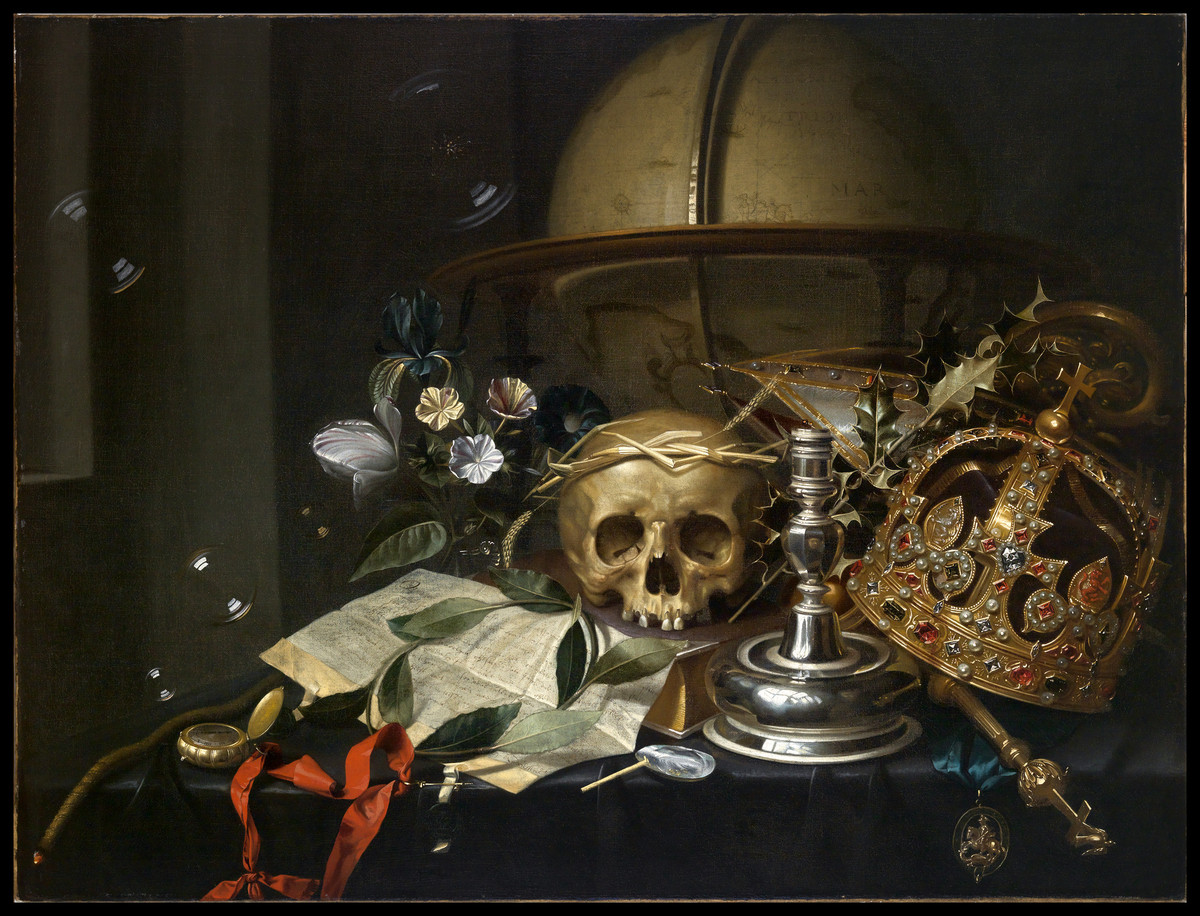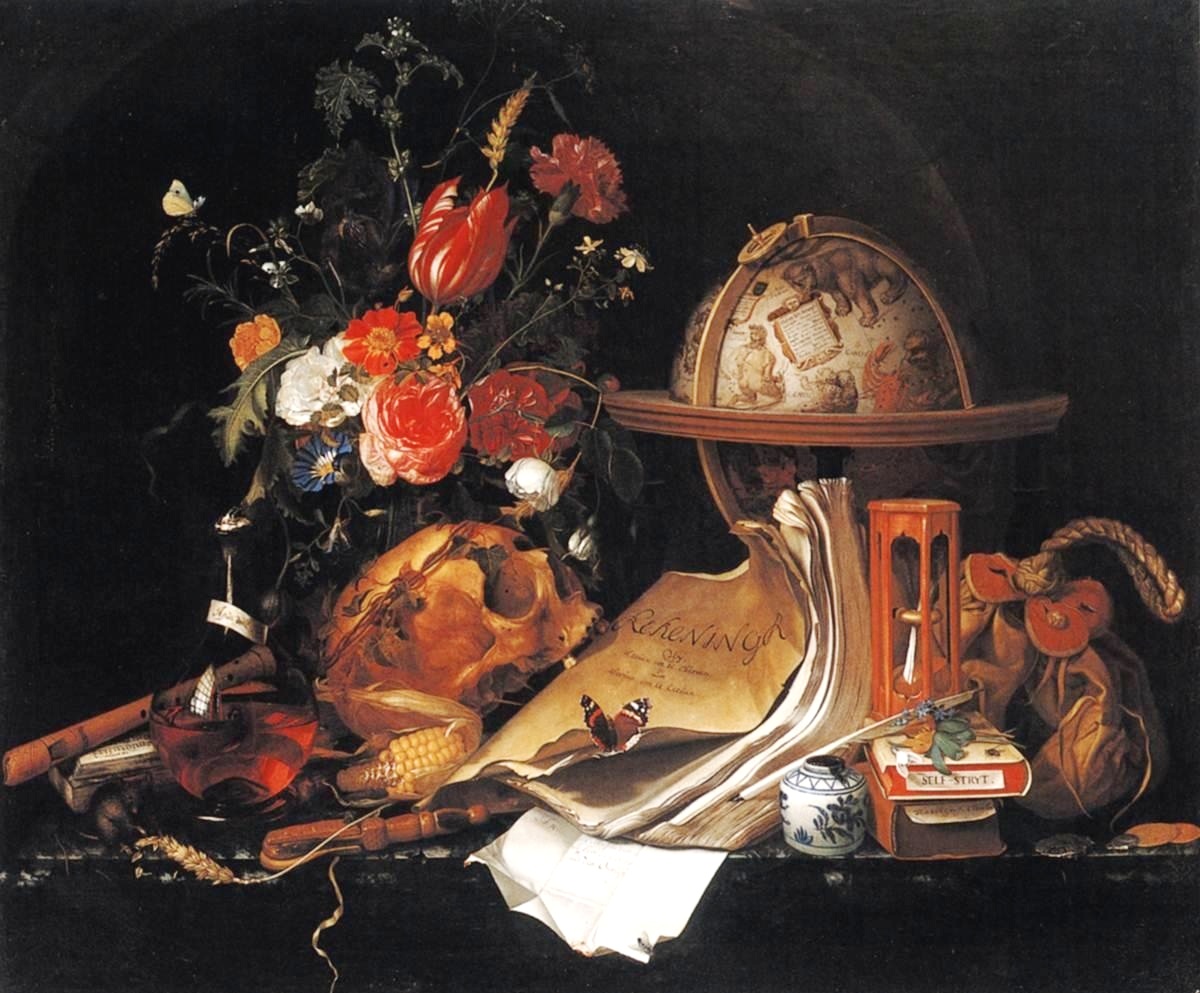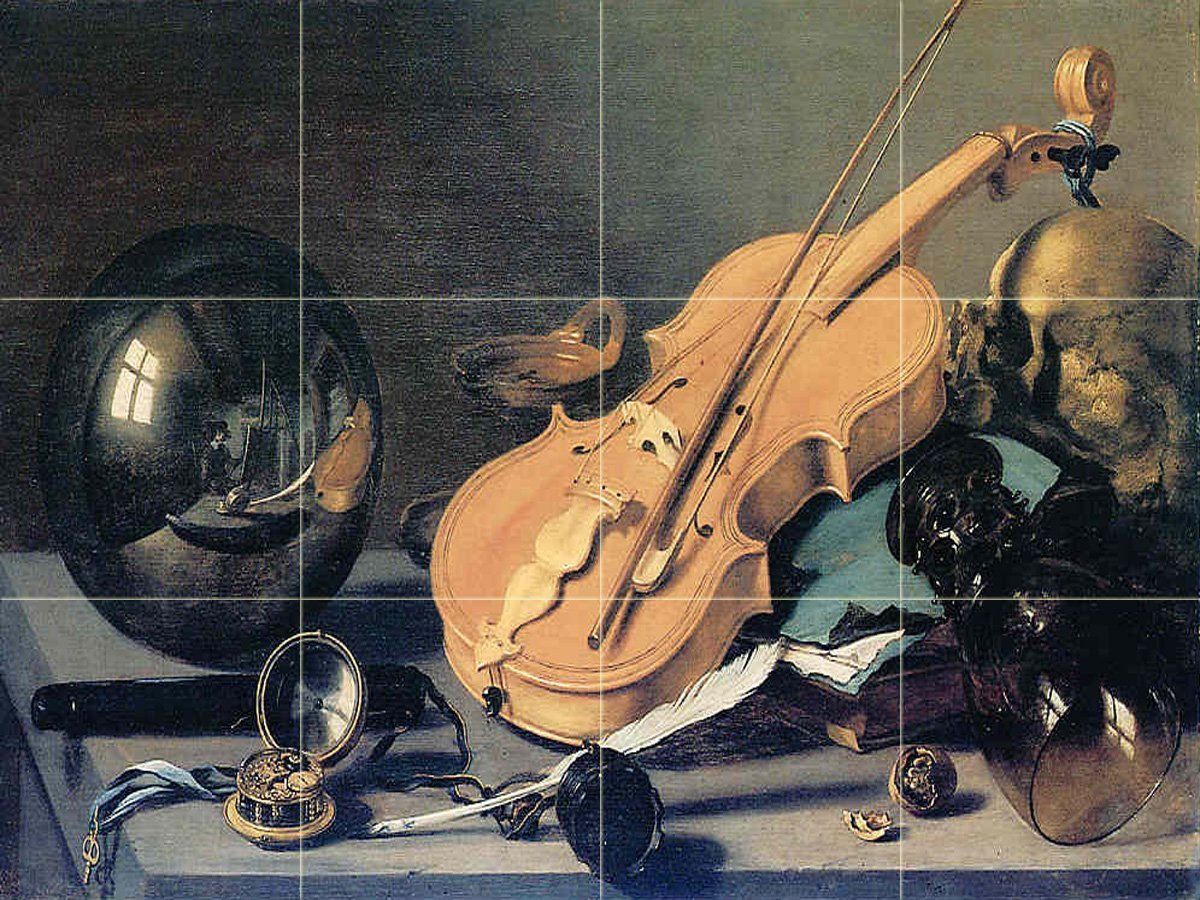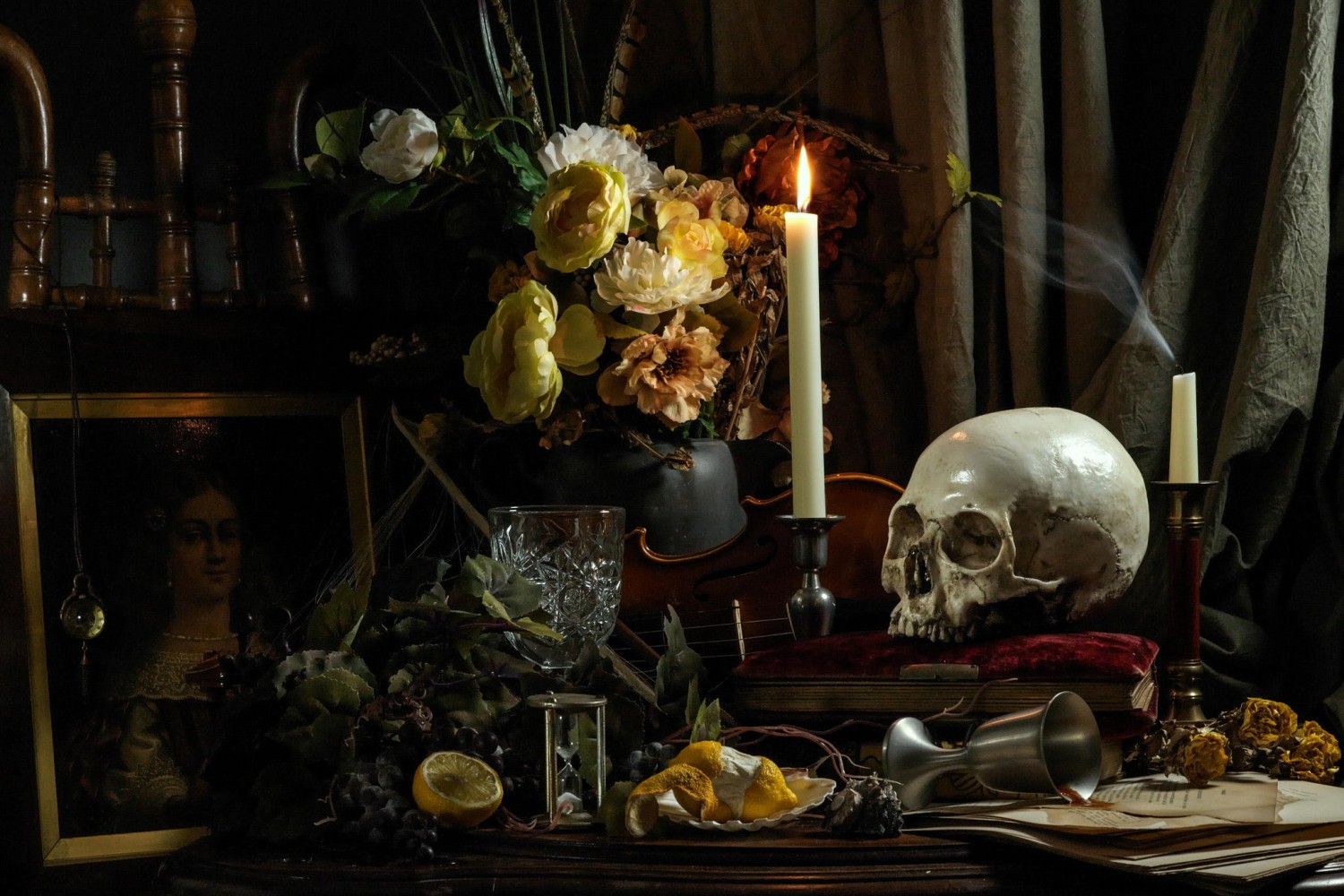
Vanitas Still Life Jacques de Gheyn II 1974.1 Work of Art
We do know that still-life paintings were valued as a demonstration of the artist's skill at depicting different materials. The textures and shadows of rumpled cloth, or the lustre of and distorted reflections in metal, glass, polished wood and shells provided an excellent opportunity for virtuoso painting which was much admired at the time.

Vanitas Still Life Mount Holyoke College Art Museum
The vanitas still life likely reminded the wealthy Earl of Devonshire about humility and piety. Apart from having as a moral message, the painting also serves as a statement of Van Roestraten's artistic talent. The attention to detail, specially in the rendition of reflective material of the silver through chiaroscuro, confirmed the artist's.

vanitas still life with a skull 17e eeuw, Stilleven
Although a few vanitas pictures include figures, the vast majority are pure still lifes, containing certain standard elements: symbols of arts and sciences (books, maps, and musical instruments), wealth and power (purses, jewelry, gold objects), and earthly pleasures (goblets, pipes, and playing cards); symbols of death or transience (skulls, cl.

Vanitas still life by N.L. Peschier, 1660. Rijksmuseum, Public Domain
Vanitas Still Life (1667-1726) by Herman Henstenburgh. (Art Institute of Chicago, Firts and Rita Marcus Fund, 2003)Still life painting fell somewhat out of favour as we moved into the later 19th.

FileVanitasStill Life, Oosterwijck.jpg Wikimedia Commons
Vanitas still life painting conveyed the spiritual through mundane, everyday objects rather than religious icons. The intricacy of vanitas painting reflects a commitment to realism and the spiritual connection between Heaven and Earth. However, vanitas paintings and Catholic art both encouraged viewers to act in accordance with God rather than.

Vanitas Still Life Painting Vanitas Still Life, 1636 by Adriaen van
Vanitas Still Life Jacques de Gheyn II Netherlandish 1603 On view at The Met Fifth Avenue in Gallery 617 This panel is generally considered to be the earliest known independent still-life painting of a vanitas subject, or symbolic depiction of human vanity.

Vanitas Still Life with SelfPortrait by Pieter Claesz Tile Mural
Details Title: Vanitas Still Life Creator: Pieter Claesz Date Created: 1625 Physical Dimensions: Panel, 29,5 × 34,4 cm Type: Painting; still life External Link: See more on the Frans Hals.

FileAfter Pieter Claeszoon VanitasStillLife c. 1634.jpg
A still life often presents costly objects in an elegant composition to be admired and discussed by the viewer, like the musical instruments, lacquer box, Rhenish jug and scarf made with gold and silver thread here. A vanitas disturbs the serenity, introducing objects with symbolic meaning: life is short, and luxury and greed - the wearing of.

Vanitas Art Thinking on Scripture
As a subgroup of still life, Vanitas painting is a category of art that aims to show the temporary nature of life, the futility of pleasure, and the inevitability of death.Vanitas painting often feature symbols of wealth, death and ephemerality. There are two main categories of Vanitas painting: those which symbolize death with objects such as skulls, candles and withered flowers and those.

Unknown Dutch Style Vanitas Floral Still Life Painting For Sale at
Home / Art History / Renaissance Art Vanitas: Paintings by the Dutch Old Masters Inspired by Life and Death By Madeleine Muzdakis on February 12, 2022 "Allegory of Vanity," by Antonio de Pereda, circa 1632 - 1636. (Photo: Wikimedia Commons, Public domain) What does a skull symbolize?

Luck and Death Vanitas
Still life: An Allegory of the Vanities of Human Life by Harmen Steenwjick, 1658, via The National Gallery, London Primarily known as a popular Dutch art genre of the Baroque period (c.1585-1730), Vanitas is closely associated with a cultural phenomenon present in Early Modern Europe known as Memento Mori (Latin for 'remember you must die').

FileHarmen Steenwijck Vanitas StillLife WGA21768.jpg Wikimedia
A vanitas painting is a particular style of still life that was immensely popular in the Netherlands beginning in the 17th century. The style often includes with worldly objects such as books and wine and you will find quite a few skulls on the still life table.

How To Create A 17th CenturyInspired Vanitas Still Life Photo 500px
Vanitas are closely related to memento mori still lifes which are artworks that remind the viewer of the shortness and fragility of life (memento mori is a Latin phrase meaning 'remember you must die') and include symbols such as skulls and extinguished candles.

Vanitas Still Life Painting Pieter Claesz Oil Paintings
Vanitas Still-life is an Oil on Canvas Painting created by Maria van Oosterwijck in 1668. It lives at the Kunsthistorisches Museum, Vienna in Vienna. The image is in the Public Domain, and tagged Flowers, Vanitas, Skulls and Death in Art.

Jan van Kessel Vanitas Still Life Vanitas paintings, Oil painting
Vanitas ( Latin for ' vanity ') is a genre of art which uses symbolism to show the transience of life, the futility of pleasure, and the certainty of death. The paintings involved still life imagery of transitory items. The genre began in the 16th century and continued into the 17th century.
FileAdam Bernaert "Vanitas" Still Life Walters 37682.jpg
Vanitas Still Life, c. 1650 West Building, Main Floor - Gallery 50C Medium oil on paper laid down on panel Dimensions overall: 20.3 × 16.5 cm (8 × 6 1/2 in.) Credit Line Nell and Robert Weidenhammer Fund Accession Number 2014.58.1 Artists / Makers François van Daellen (artist) active c. 1636 - c. 1651 Image Use This image is in the public domain.